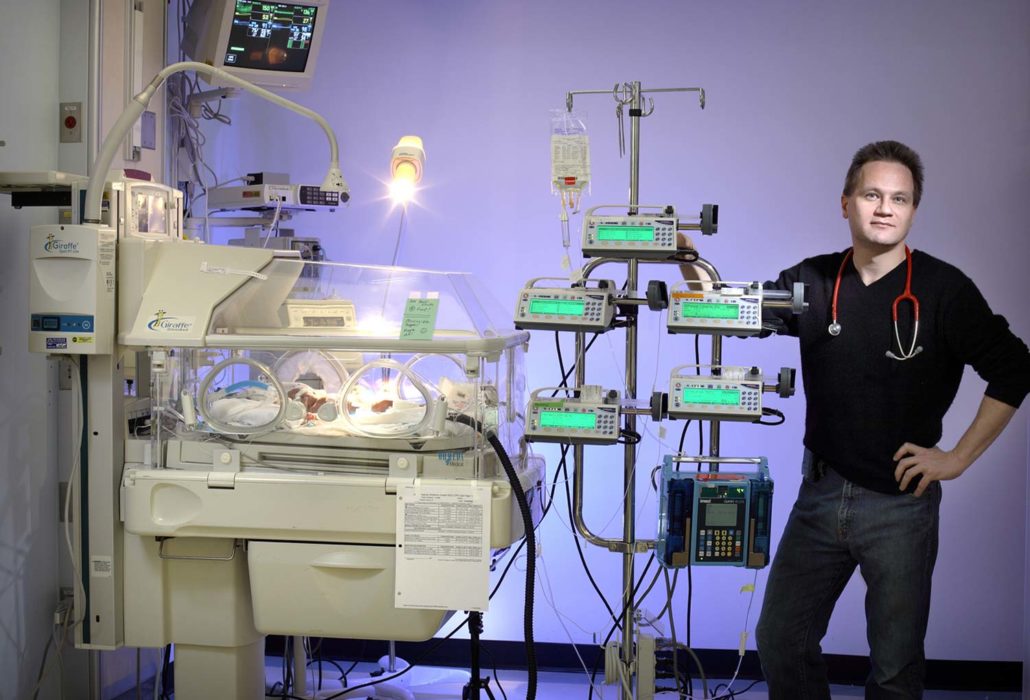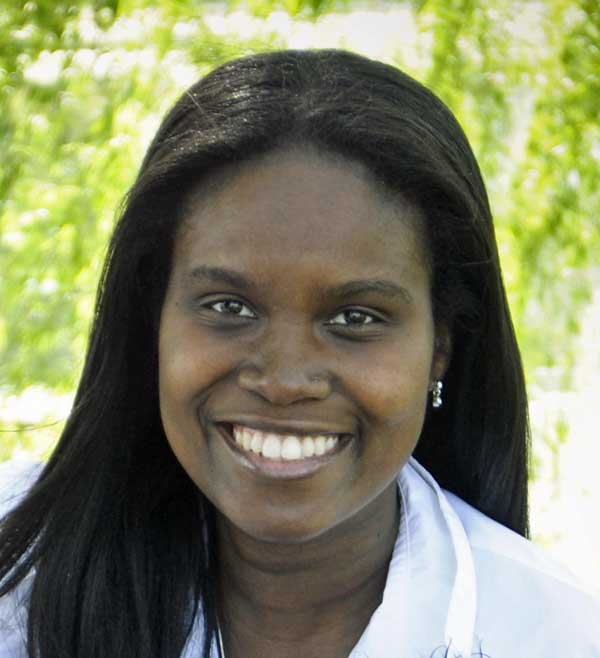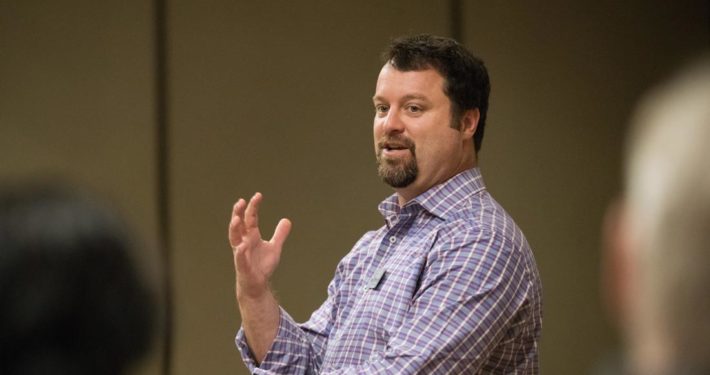Vanderbilt University: Raising the Bar for Innovation in Pediatric Electronic Health Records
Researchers at Vanderbilt University develop tools from immunization forecasting to a better electronic health record workflow with a focus on improving health outcomes.
Recruitment, Retention, and the Power of Collaboration
Vanderbilt University boasts the largest Department of Biomedical Informatics in the world. Over the past decade, the institution has recruited programmers and physicians leading their fields in cutting-edge research. For example, Dr. Christoph Lehmann was recruited to Vanderbilt by his former mentor, Dr. Kevin Johnson. Dr. Lehmann spent seventeen years at Johns Hopkins University, where he undertook fellowships in neonatology and applied informatics before joining Vanderbilt’s faculty. “In 2012, they made me an offer that was too good to refuse,” says Dr. Lehmann. “I have only one regret about the move to Vanderbilt, and it’s that I didn’t move earlier.”
Dr. Lehmann belongs to a group of people that some jokingly refer to as the “Vanderbilt Mafia,” an impressive group of innovative health information technology (HIT) professionals. How did Vanderbilt attract its high powered team, and become a hub for pioneering HIT?
Dr. Kevin Johnson helped to shed light on this question. He is the chair of the Department of Biomedical Informatics and the senior vice president of HIT at Vanderbilt Medical Center. Joining Vanderbilt in 2002, he has since recruited many of its star researchers and developers.
“It comes from the top down,” says Dr. Johnson. “We started with a vision at the institutional level.” In the early 1990’s, responding to a critical need on campus, Vanderbilt University Medical Center began to build a clinical system that required expert developers, as well as leadership from physicians. “We’ve had the right set of tools, coupled with a highly collaborative environment, that’s made it, frankly, easy for us to recruit people and them to not want to leave,” says Dr. Johnson.

Speaking of his first few years at Vanderbilt, Dr. Stuart Weinberg, associate professor of biomedical informatics and pediatrics, said: “If you had an idea that worked, there was a good chance you could get it into the system…Vanderbilt was a huge sandbox in which to do very innovative work.”
To attempt to pinpoint Dr. Weinberg’s area of focus would be a futile exercise. He is currently the chair of the American Academy of Pediatrics Council on Clinical Information Technology (COCIT), served for eleven years as project director of Vanderbilt’s Outpatient Whiteboard (OPWB) application, developed the bi-directional data exchange between clinics and the state immunization registry, and integrated a vaccine forecasting web service into the electronic health record (EHR) to provide immunization clinical decision support. Dynamic resume aside, the unifying tenet of Dr. Weinberg’s activities is “workflow.”
“What we try to do at Vanderbilt is demonstrate the art of the possible… I always take great pleasure in doing things that people told me couldn’t be done.”Dr. Stuart Weinberg
Vanderbilt’s Homegrown EHR
During his residency at the Children’s Hospital of Pittsburgh in the 1980s—a decade in which owning a personal computer was “geeky,” in Dr. Weinberg’s own words—he baffled and intrigued his colleagues by bringing in printed patient records after creating a database on his home computer. “I got a lot of strange looks, which I got used to,” he laughs. This “geeky” side project led Dr. Weinberg to a medical informatics fellowship in Pittsburgh sponsored by the National Library of Medicine, and eventually to his recruitment to Vanderbilt as an assistant professor specializing in software development. Here, Dr. Weinberg’s affinity for maximized workflow found its ultimate sandbox.
One of Dr. Weinberg’s first projects at Vanderbilt was the development of the Outpatient Whiteboard (OPWB). In 2005, the OPWB was implemented in pediatric cancer clinics, but has since expanded to over 200 clinics with a range of specialties. The OPWB streamlines contact between all members of a healthcare team by displaying information about a patient’s status. It also collects data on clinic workflows, identifying where clinics can better utilize or reallocate resources. When Dr. Weinberg first rolled out the OPWB, he told members of the clinic healthcare team: “This isn’t a system you should have to use— you should want to use it because it makes your day better.”
The OPWB goes beyond knowing which patient is in which room; it also improves preventative care. Among its many successes, the OPWB helped increase the number of flu shots given to children by 52 percent in practices using the system. The flu vaccine alert was embedded in the OPWB following a study at the Vanderbilt Children’s Hospital that identified missed opportunities to vaccinate during the 2009-2010 season. This alert is testament to the efficiency and synchronicity that EHRs can offer to preventative medicine, and, most importantly, it helps providers give proactive, quality care.
According to Dr. Weinberg, maximizing workflow should be the primary function of every EHR. “You shouldn’t be fighting your system when you’re trying to take care of your patients,” he says.
Immunization Forecasting
Of course, offering an accurate flu alert means that pediatricians need quick access to outside immunization data. In a project overseen by Dr. Weinberg, Vanderbilt researchers have made that possible. In 2011, developers connected their EHR, StarPanel, to the Tennessee State Immunization Registry. Now, vaccination records can be sent and retrieved online between clinics and the state.
Determining whether a child is due for their next shot may sound simple, but without the right tools the process of analyzing the immunization record can be overly complex for providers. Dr. Weinberg went to the vendor that currently supports Tennessee’s state immunization registry and discovered that the vendor used a stand-alone interface that could be integrated with any EHR as a web service. He reports that “within a few weeks, we were able to incorporate their ‘black box’ of immunization rules and logic into our electronic medical record.”
Demonstrating both a novel display of records returned from the state registry plus implementation of the forecasting web service, Vanderbilt hosted multiple site visits for staff from the state registry, so that government organizations could see the “impossible” accomplished. “Our main goal is to be smart about how we process and handle information— let’s make sure we’re helping providers,” says Dr. Weinberg.
Meaningful Use and EHR Development
Interactions with government agencies can often pose more challenges than triumphs to EHR development. Requirements set by Meaningful Use (MU) represent a significant hurdle in the development of a smarter pediatric EHR. When asked what he saw as the largest challenges to tackle in child health informatics, Dr. Lehmann immediately mentioned MU requirements. Meaningful Use, included in the American Recovery and Reinvestment Act of 2009, functions like all stimulus funding: The government can reallocate funds to other projects if its criteria are not met. Dr. Lehmann posits that as a result, some EHRs developed “may not have been the best for patients and providers, and certainly not for pediatricians.” For most adult providers, MU requirements are regulated by a single Medicare agency, but pediatricians are regulated by 56 different state Medicaid agencies, all with unique requirements.
As the medical director of the Child Health Informatics Center at the American Academy of Pediatrics (AAP), Dr. Lehmann is intimately familiar with the roadblocks these regulations can create. “The AAP has a really good reputation in Washington because we advocate for children, not because we represent doctors,” Dr. Lehmann says. “The number one priority of the AAP is to make child health better.” However, advocating for clinicians often goes hand in hand with improving pediatric care. “We are constantly fighting,” says Dr. Lehmann.
He mentions a recent case in which a state Medicaid attempted to rescind a pediatrician’s MU payments. The story starts off grimly: The independent pediatrician received a notice that she owed almost $6,000 from MU incentives that she received ostensibly incorrectly. Her infraction? The provider was informed that she had neglected to report on a specific MU measure, even though the Centers for Medicare and Medicaid Services (CMS) and Office of the National Coordinator for Health Information Technology (ONC) had acknowledged inconsistencies in reporting requirements for that measure, and had removed it as an MU incentive option. However, the auditor left no room for such nuance. Dr. Lehmann (alongside this pediatrician’s EHR vendor) fought the audit with the AAP, and eventually the physician’s payments were restored. “But this took a significant amount of effort,” says Dr. Lehmann, “and it’s something most adult providers don’t have to deal with.”
Dr. Lehmann’s work with the AAP and his work at Vanderbilt are, in his words, “incredibly synergistic.” Examples of this cohesion are numerous. Recently, Vanderbilt developed software with the capacity to predict with 85 percent probability whether a premature baby will be discharged from the NICU in the next four days; researchers are currently experimenting with alerting providers when these patients are ready for discharge. Dr. Lehmann’s dual positions at Vanderbilt and the AAP enable him to engage with research at the institutional level, and then track its outcomes on the ground. “Our world has changed, and the documentation requirements put out in ‘97 no longer match this world,” he says. Lehmann is passionate about changing these requirements to meet the needs of providers, and in the meantime, developing evolved, thoughtful strategies to meet them.
Precision Medicine, Pediatric Functionalities, and Real Practice Application
Despite the best efforts of people like Dr. Lehmann, there aren’t many EHRs that incorporate niche indicators like the NICU alert, or Dr. Weinberg’s flu vaccine alert. In 2012, Dr. Lehmann co-authored a paper that found that only eight percent of pediatricians in the U.S. had EHRs with pediatric functionalities. “This is why we were so aggressive in lobbying for the certification of pediatric EHRs,” says Dr. Lehmann, referring to language the AAP fought to include in the recent 21st Century Cures Act. “As long as I’m doing this, we’ll push that EHRs need things like weight-based dosing, immunization forecasting, things that pediatricians need to monitor developmental milestones… these functionalities are essential to being a professional and doing your care well.”
The fight to certify pediatric EHRs is a fight that aims to support providers, save time, and bring costs down for patients. Vanderbilt is throwing its weight into this fight at the level of both research and policy. According to Dr. Kevin Johnson: “Precision medicine has been part of Vanderbilt’s vision since 2004.” In fact, President Obama’s multi-million dollar Precision Medicine Initiative was born out of research that Vanderbilt has been doing for more than 12 years.
While precision medicine is a formidably dense field, Dr. Johnson breaks it down into a few broad categories. One of these is simply improving existing infrastructures to better support precision medicine. “We’re looking at questions like: How do we store and retrieve information more efficiently? How do we show the results of precision medicine knowledge in our clinical system?” he asks.
Why is this research important to a doctor in the field? Dr. Johnson frames the answer in terms of prescriptions. He describes a current goal for pediatric precision medicine, aptly dubbed “Right Drug First Time.” “There are numerous examples of dose escalation or changing medications completely due to treatment failure, when in retrospect, or after analysis, we discover that this patient was never going to respond to that medication,” says Dr. Johnson. “Our goal is to work to improve the success rate of first-time prescriptions, using data and knowledge at the point of care.” If existing EHRs can be altered to more efficiently retrieve patient history, and then display those histories through a precision medicine lens, providers would be better set up to target a medication to a patient’s condition when that medication is first prescribed.
Dr. Johnson described the next category as “translational:” the process of rendering precision medicine research relevant to real practices. This starts with building that research into HIT systems. He offers the example of a homeless patient. “We don’t think we should give homeless patients medications that require refrigeration,” he says. But how does a provider identify a homeless patient if that patient doesn’t specifically say as much? Vanderbilt researchers aim to build interfaces smart enough to assist providers in identifying a patient’s population. Even if that patient does not divulge that they are homeless, the provider might be able to give them more personalized care based on indicators in the EHR.
On the process of translation, Dr. Lehmann says: “It’s an enormous amount of data to manage. Precision medicine requires people with tenacity and a desire to get this right.” One of these tenacious people is Dr. Yaa Aboagyewa Kumah-Crystal, an assistant professor of pediatric endocrinology and biomedical informatics at Vanderbilt. “There’s always been a gap between the research world and the clinical world,” says Dr. Kumah-Crystal. “We’re working on taking it back to the patient.”
With an infectious laugh and fierce sense of optimism, Dr. Kumah-Crystal was appointed to the faculty in 2015. But she’s by no means new to Vanderbilt: Kumah-Crystal received her medical degree from the Vanderbilt School of Medicine in 2008, went on to complete her residency at the Vanderbilt Children’s Hospital, and is pursuing a master of science in biomedical informatics. She tells me about Vanderbilt’s “innovation group” assembled to address this research-implementation gap in the context of Vanderbilt’s new EHR. “Now we have a group of people that can say, ‘here’s what we’re about to demonstrate [through research], here’s how things work in the real world—how can we connect them?’”
Dr. Kumah-Crystal stresses the importance of not only making this research relevant in the “real world,” but also incorporating it into the EHR workflow. “We’re not quite to the point where we’re providing rich enough information for everyone to really feel like that extra click to complete the clinical summary is doing something really important for the patient,” says Dr. Kumah-Crystal. “If you feel like you’re doing what you’re doing just to check a regulatory box, you’re not going to be as motivated to do it. We can do a better job of integrating workflow so you’re not just doing something extra, you’re doing something worthwhile.”
Dr. Kumah-Crystal addresses an essential concern of today’s pediatricians. Even when doctors work with a vendor that has tailored an EHR to their specific needs, they still need to fulfill requirements within the EHR that they don’t care about. Doctors can end up scrambling to get through the day, and frustration builds over wasted hours spent checking boxes. She describes a development in Vanderbilt’s new EHR aimed at decluttering a doctor’s day. Vanderbilt will be implementing an insulin calculator for diabetic patients, a project that Dr. Kumah-Crystal is leading. Determining an insulin dose can be an incredibly time (and math) intensive task, so Dr. Kumah-Crystal proposed embedding a calculator that enables a nurse to simply enter the number of carbohydrates a patient consumed at a given meal. While this indicator requires extra data entry on the front end, it pays off tenfold in time saved doing further calculations on the back end. “When I initially proposed that the nurses should start documenting carbohydrates consumed in a particular field that would be separate from where they normally do their other documentation, there was a lot of push back, since it seemed like extra work,” says Dr. Kumah-Crystal. “But after explaining the net benefit and how much extra time it would save on manually calculating all the other components to determine how much insulin a patient would need, they were actually really excited about the new workflow.”
“We can do a better job of integrating workflow, so you’re not just doing something extra, you’re doing something worthwhile.”Dr. Yaa Kumah-Crystal
The New Hospital EHR
In November of 2017, Vanderbilt’s new large hospital EHR will go live. Dr. Kumah-Crystal functions as a core design advisor for the transition. She’s responsible for analyzing how providers use the existing interface, and then prioritizing which functions should be incorporated in the new software.
Dr. Johnson points to the new EHR as an opportunity for Vanderbilt to make its technologies more widely available. “As an informatics training program, we are training some of the future leaders in the field. For us to be doing so without an EHR that is relevant to everyone else in the country seemed silly to me,” Dr. Johnson says. “We see the opportunity to work jointly with a vendor as a way to generalize any innovations we have in pediatric informatics to a wider community.”
However, Vanderbilt is still deeply committed to developing and maintaining technologies that support pediatricians and independent EHRs. The Department of Biomedical Informatics has built some incredibly specific decision support, from indicators that predict the probability of a patient getting a pressure ulcer to the possibility of readmission. While it would be too complex to build all of these indicators into their own EHR, Dr. Lehmann says that Vanderbilt hopes to offer them in a web service that can be layered over any EHR, like Dr. Weinberg’s immunization clinical decision support model. All of the faculty members interviewed expressed optimism that Vanderbilt’s previously existing functionalities will remain available to pediatricians.
Vanderbilt, says Dr. Johnson, is excited about working with vendors to manage information, and to create transactional environments that are the bedrock for more sophisticated informatics methods and applications. “We expect to work with—not against—the vendor community for the greater good of our patients, using interoperable standards that foster data liquidity,” he says. The take away: It’s in the vendor’s best interest to promote interoperability, rather than commodify the data they manage.
National Policy
The ambitious goal of promoting interoperability requires entering the national policy fray, where health information exchange is at the heart of the legislative tangle. Dr. Lehmann recently co-authored a paper advocating that EHR systems better facilitate pediatric health information exchange (HIE). Dr. Lehmann and his co-authors write: “The promise of EHRs to improve the quality of care, increase safety, and reduce costs will only come to fruition when important clinical data are made available through exchange.” Their paper argues for incentivizing the implementation of Direct message systems among practices, hospitals, and emergency services.
Herein lies a prime example of how government regulation affects the research-clinical gap: Researchers have built Direct messaging capabilities, but the support and incentives to implement these capabilities have fallen by the wayside. What’s more, in some cases large hospitals are actually motivated to avoid implementing data sharing measures. If community pediatricians have EHRs that are interoperable with big hospitals, their dependency on those hospitals decreases. In one study, Dr. Lehmann identified a community pediatrician in Tennessee who attempted to submit a summary of care record to a local children’s hospital, but was informed that their EHR was not compatible with Direct messaging, and that it might take years for their IT department to build out that capability.1 Issues of interoperability, with the ultimate aim of better patient care, require perseverance and coordination with Washington. Lehmann and the AAP are doing their best to look out for independent pediatricians at the federal level; Vanderbilt’s academic efforts pay off in their support of the practical needs of community pediatricians.
Dr. Lehmann, through his AAP appointment, spends a lot of time negotiating with policymakers. He describes what it’s like to work with people on the Hill: “Committee staffers actually base decisions on scientific data. It doesn’t matter which side of the aisle you’re talking about; once we have the data they are willing to listen.”
Vanderbilt’s history of interactions with Washington validates this point. In 2004, President George W. Bush visited Vanderbilt to observe their HIT system before announcing the Office of the National Coordinator for Health Information Technology (ONC). “President Bush recognized that we were making a difference in patient outcomes because of the level of technology we had in place,” says Dr. Johnson.
Early conversations about Meaningful Use provided opportunities for Vanderbilt faculty to testify on the Senate floor. Of Vanderbilt’s interdisciplinary Innovation Center, Johnson says: “We bring together large groups of scientists, engineers and policy people so that we can show them what we’ve done, ask really cool questions together about what’s possible, or even discuss what hasn’t worked well.” Dr. Johnson and other faculty describe a willingness at Vanderbilt to recognize cracks in existing systems, and to develop creative solutions. Some of these solutions are born out of Vanderbilt’s education initiatives, like the new Masters in Applied Clinical Informatics. The master’s degree is directed toward health care professionals who want to be “more effective in management of data and systems,” says Dr. Lehmann, who directs the closely linked informatics fellowship. The informatics fellow rotates between medical and HIT departments, building bridges between disciplines. With the board certification of clinical informatics as a specialty in 2013, these programs are more relevant than ever.
What’s Next?
Dr. Lehmann recently visited a university in Australia where students and faculty expressed interest in the master’s degree in clinical informatics. “They don’t have the experts to keep their systems up to date and running well, so they’re interested in talking to Vanderbilt and bringing a spin-off of this to Australia, taking Vanderbilt content and using it to educate their workforce,” Dr. Lehmann says. “Wouldn’t it be cool to offer this in other English-speaking countries as well?” Discussions about offering the master’s degree abroad are still in their early stages, but they evidence Vanderbilt’s continuous efforts to advance the state of HIT around the world.
“We are embarking on a whole host of prescribing decision support initiatives,” says Dr. Lehmann. “They are designed to make prescribing not only safer but also more cost effective.” He has been involved in therapeutic substitution research to replace brand name medications with their generic substitutes, saving patients money over time. He describes a vision for moving hospitals away from expensive IV medications, and switching patients to PO medications. “It is extremely expensive to keep IVs in hospitals. In babies, they last on average only 24 hours. We calculated at Hopkins that if we’d used only oral medications in internal medicine for a year, we could’ve saved $1.1 million that year,” Lehmann says. And those savings would have occurred within Hopkins’s Department of Medicine alone. Improving existing EHRs through a precision-medicine lens means fewer follow-ups, happier patients, and money saved.
Although, as a rule, independent practices don’t use IVs, pediatric dosing remains one of the Achilles’ heels of independent pediatric EHR development and implementation. Vanderbilt’s inclusion of this issue within the scope of its research informs future developments in pediatric EHR, both at Vanderbilt and within the national EHR market.
And if anyone could reshape the current state of EHRs, it’s this group of people. “What we try to do at Vanderbilt is demonstrate the art of the possible,” says Dr. Stuart Weinberg. “I always take great pleasure in doing things that people told me couldn’t be done.”
[1] Christoph U. Lehmann et al., “Barriers to Pediatric Health Information Exchange.” Pediatrics 139, no. 5 (May 2017) http://pediatrics.aappublications.org/content/139/5/e20162653 ↑
Emily Graf is a freelance writer, wilderness educator, and English teacher living in Colorado. She is passionate about telling stories that promote equal access to quality health care. She can be contacted at emgraf11@gmail.com for inquiries.










